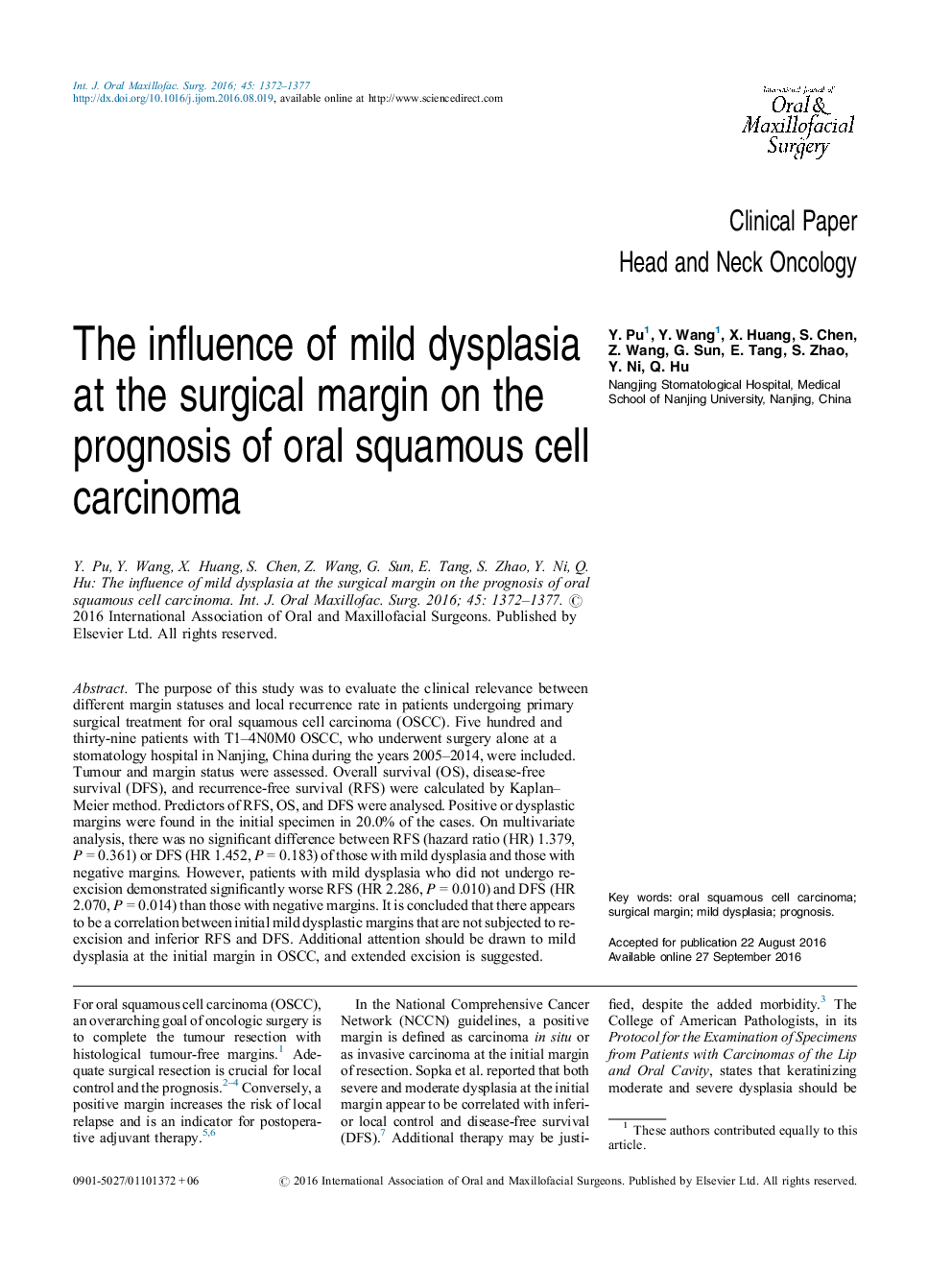| کد مقاله | کد نشریه | سال انتشار | مقاله انگلیسی | نسخه تمام متن |
|---|---|---|---|---|
| 5638924 | 1584111 | 2016 | 6 صفحه PDF | دانلود رایگان |
The purpose of this study was to evaluate the clinical relevance between different margin statuses and local recurrence rate in patients undergoing primary surgical treatment for oral squamous cell carcinoma (OSCC). Five hundred and thirty-nine patients with T1-4N0M0 OSCC, who underwent surgery alone at a stomatology hospital in Nanjing, China during the years 2005-2014, were included. Tumour and margin status were assessed. Overall survival (OS), disease-free survival (DFS), and recurrence-free survival (RFS) were calculated by Kaplan-Meier method. Predictors of RFS, OS, and DFS were analysed. Positive or dysplastic margins were found in the initial specimen in 20.0% of the cases. On multivariate analysis, there was no significant difference between RFS (hazard ratio (HR) 1.379, PÂ =Â 0.361) or DFS (HR 1.452, PÂ =Â 0.183) of those with mild dysplasia and those with negative margins. However, patients with mild dysplasia who did not undergo re-excision demonstrated significantly worse RFS (HR 2.286, PÂ =Â 0.010) and DFS (HR 2.070, PÂ =Â 0.014) than those with negative margins. It is concluded that there appears to be a correlation between initial mild dysplastic margins that are not subjected to re-excision and inferior RFS and DFS. Additional attention should be drawn to mild dysplasia at the initial margin in OSCC, and extended excision is suggested.
Journal: International Journal of Oral and Maxillofacial Surgery - Volume 45, Issue 11, November 2016, Pages 1372-1377
